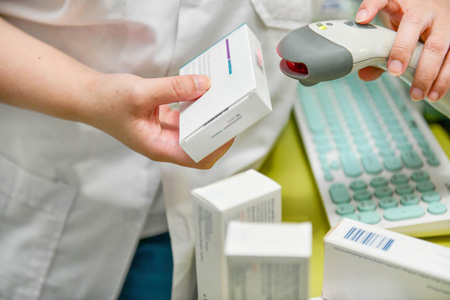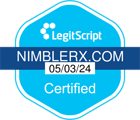


What Is Hyaluronic Acid?
Head to the skin care aisle of almost any store and you’ll find hyaluronic acid in products like serums, creams, masks, and cleansers. So why is it everywhere? Moisture! Hyaluronic acid (abbreviated as HA) is a powerful moisturizer and can help dry skin stay well hydrated, especially during dry winter months.
Let’s dive into what precisely hyaluronic acid is on a chemical level and how it can potentially help improve the appearance and moisture of your skin — but remember to always consult with your doctor before making any updates to your skincare regime.
What Is Hyaluronic Acid?
Hyaluronic acid, also called hyaluronan or hyaluronate, is a substance that retains over 100 times its weight in water. It’s a sticky, gooey substance found naturally in your body — in places like your eyes, skin, and joints.
As we age, however, we make less of it. Less hyaluronic acid, along with decreased production of other substances like collagen and elastin, can make skin lose fullness and moisture.
What Does Hyaluronic Acid Do for the Skin?
Hyaluronic acid within skincare products aims to fill the gap of what your skin lacks when it stops being naturally produced. It can be taken in pill form, topically, in eye drops, in gels suitable for internal use, by injection, and even via inhalers.
Through these different forms, patients can possibly see improved joint function, improved hydration (especially in regard to dry eyes and skin), and improved skin elasticity.
Probably the most known application is topically through the use of skincare products. When hyaluronic acid is applied topically, it holds water molecules on the surface of your skin to keep it moisturized — and it can even help wounds heal faster and potentially reduce scarring.
What Kinds of Products Contain Hyaluronic Acid?
As mentioned above, there are a multitude of ways you can supplement your body’s supply of hyaluronic acid. Topically there are shampoos, lotions, creams, gels, ointments, patches, and serums available over the counter or by prescription that contain hyaluronic acid.
Not all hyaluronic acid is the same, however. It comes in different-sized molecules. The smaller the molecule, the deeper it can penetrate the skin. When selecting a serum or cream containing hyaluronic acid, look for ones formulated with molecules of varied sizes. Large hyaluronic acid molecules can only add moisture to the surface of the skin whereas smaller molecules can penetrate the epidermis.
Beyond topical products, hyaluronic acid is also available as a derma gel filler via injection. These fillers inject the hyaluronic acid deeper and both add volume to sagging skin but also attract moisture to enhance the skin. The injectable hyaluronic gel can be used for a number of cosmetic concerns like sunken under-eye circles, wrinkles, creases around the mouth, and even wrinkles on the hands.
For those looking to replace the hyaluronic acid their body has stopped producing as they age and potentially restore the elasticity and moisture of their skin, these solutions can be a solid treatment. Before making any changes to your skincare routine, be sure to consult with your dermatologist or doctor to ensure you understand your unique risks, any potential side-effects, and to determine if hyaluronic acid is right for you.


.jpg)
.jpg)
.jpg)


















.jpg)





















.jpg)

















.jpg)


























.jpg)
.jpg)
.jpg)









